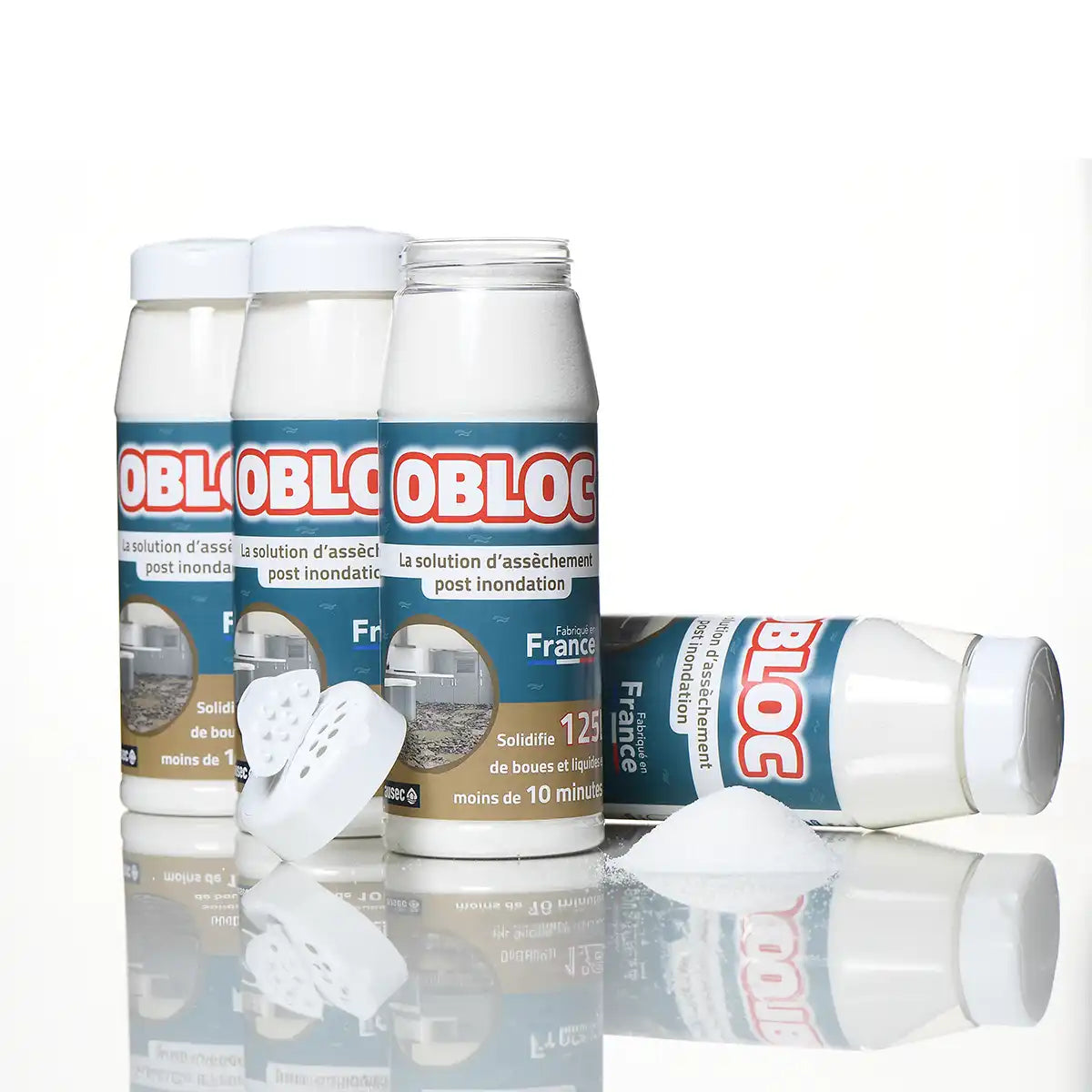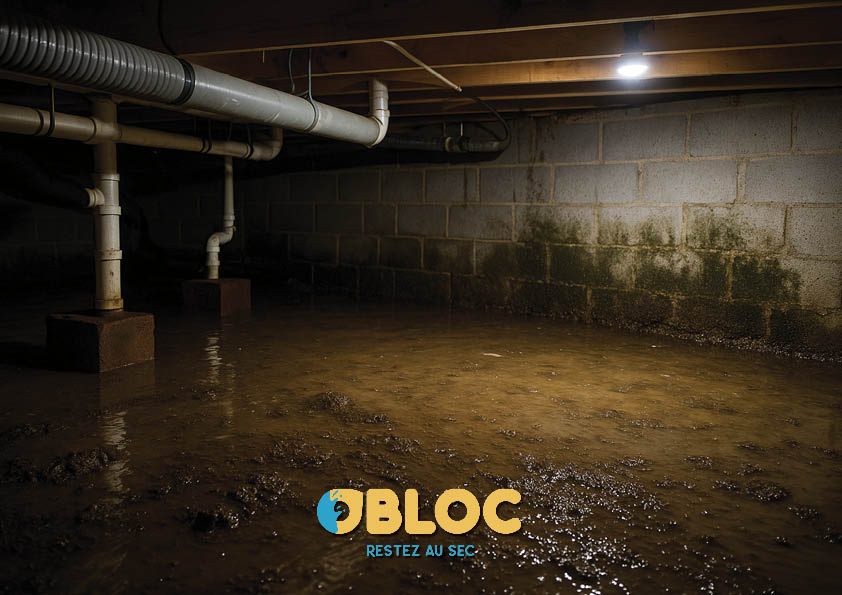At OBLOC®, we know how worrying it can be to discover stagnant water in your crawl space. This area, often invisible and overlooked, nevertheless plays a crucial role in the stability of a home. Whether it's a new construction or an existing home, water infiltration can have serious consequences: persistent humidity, mold, cracks, land subsidence, and even damage to the building's structure.
This guide takes you step by step to understand why water accumulates, how to evacuate it effectively, what to do in the event of a disaster, and what measures to put in place to prevent it from happening again.
Is it normal to have water in a crawl space?
The answer is no. While some older homes tolerate a slight level of humidity, the presence of standing water should never be ignored. This reflects a cause of the presence of untreated water: poor drainage, flood-prone terrain, rising water tables, or internal leaks. In the long term, this compromises the structural integrity of the building, weakens the foundations, and can lead to serious health consequences for the occupants, such as respiratory problems.
Understanding Why Water Accumulates in a Crawl Space
Why is my crawl space flooding?
A crawl space can become flooded for several reasons. The most common is heavy rain. When a house is built on flood-prone or poorly drained land, rainwater has nowhere to drain. As a result, it stagnates beneath the house, where ground pressure pushes it up. Rising water tables, often silent and invisible, are also a common cause of water under homes.
Sometimes the situation is aggravated by a broken pipe, a leaky crawl space, poorly directed downspouts, or an inadequate drainage system. Some buildings, particularly in flood-prone areas, are particularly at risk if the crawl space has not been properly designed. The absence of a French drain, ventilation grilles, or a sump pit limits water circulation, creating a permanently damp environment, just like in a flooded basement.
How do I drain rainwater from a crawl space?
Evacuating water: practical and immediate solutions
When faced with a crawl space filled with water, it's essential to act quickly. The help of a pump is often essential. Depending on the depth of the water, a basement drain pump or a lift pump is generally used. These devices allow water to be extracted quickly, especially if it exceeds several centimeters in depth. It's important to ensure that the drain is directed to a public sewer or a permitted area.
In extreme cases, when it is impossible to connect an electrical appliance, manual solutions can also be used, such as a sump combined with a stand-alone pump, or absorbent products such as our absorbent bags or anti-flooding sausages . The important thing is to lower the water level to prevent rising damp from seeping into the basement walls.
How to remove moisture from a crawl space?
Draining water isn't always enough. Once the area is cleared, it's essential to address any lingering moisture problems. This moisture often causes mold, unpleasant odors, and health risks for occupants. The first step is to create good ventilation. This involves installing or regularly maintaining ventilation grilles and temporarily opening access hatches.
A humid environment also promotes the proliferation of bacteria and fungi. To clean it up, dehumidifiers or natural solutions are often used while waiting for professional intervention. Using permanent drainage systems, reinforced insulation, or reinforced waterproofing of the crawl space can address the root of the problem.
When should you call a professional?
If the flooding is significant or recurring, calling in an expert becomes essential. A mason or a company specializing in drainage work will be able to thoroughly assess the situation. In some cases, particularly for new homes, you are protected by the perfect completion guarantee. And if the cause is considered a hidden defect, there are legal remedies supported by case law in the event of a dispute.
A claim can also be filed with your insurance company. Depending on the circumstances, you may be covered by building damage insurance, or by a natural disaster plan if your municipality has been declared a disaster area.
What to do for prevention
Protecting a crawl space from moisture and flooding begins well before the warning. This requires good design from the construction stage, with waterproof walls, adequate ventilation, and an efficient drainage system. On sensitive land, drainage should include well-directed downspouts, a French drain around the foundation, and regular pipe maintenance.
For older homes, it is recommended to regularly check the condition of the crawl space, monitor for the appearance of odors or mold, and store sensitive objects up high.
And for rapid intervention in the event of a problem, some choose to equip themselves with emergency devices such as anti-flood kits to be installed immediately in the event of infiltration.
Protecting your home means thinking long term
A crawl space filled with water shouldn't be seen as inevitable. By understanding the causes of the problem, using appropriate solutions, and acting at the first signs, it's possible to limit the damage and prevent its recurrence. Whether you're a homeowner, tenant, or a future buyer, prevention is better than repair.
And to go further:
→ What to do in case of flooding?
→ Flooded basement: limit the damage





Leave a comment
This site is protected by hCaptcha and the hCaptcha Privacy Policy and Terms of Service apply.